TOP 2019
PAGE 22





















 The EERC proudly congratulates
Melanie Jensen and Erin O’Leary, two dedicated professionals who consistently make positive contributions to the organization and to our community.
Erin O’Leary CFO/COO
The EERC proudly congratulates
Melanie Jensen and Erin O’Leary, two dedicated professionals who consistently make positive contributions to the organization and to our community.
Erin O’Leary CFO/COO








IN THEIR SPARE TIME, CORPORATE TRAVELERS TO WESTERN NORTH DAKOTA CAN VISIT MINOT’S SCANDINAVIAN HERITAGE PARK, WHERE THEY’LL FIND THE REPLICA STAVE CHURCH FROM GOL, NORWAY, AND STATUE OF NORWEGIAN-BORN CASPER OIMOEN, A MINOT RESIDENT WHO WAS AN OLYMPIC SKIER. PAGE 32. IMAGE: MINOT CONVENTION & VISITORS BUREAU


A Q&A WITH PAUL WILSON, CEO OF ONE OF FARGO’S BIGGEST BUT LEAST-KNOWN EMPLOYERS: NORIDIAN HEALTHCARE SOLUTIONS 25 WOMEN







































































Judging by the glass ceiling’s continuing presence and seeming durability, you might think the material is bulletproof.
But here’s the thing: Hit it with a sledgehammer often enough, and even the toughest bulletproof glass will yield. That’s what’s happening across the Prairie Business region these days, as our annual Top 25 Women in Business award issue shows.
The 25 women profiled in this issue include business owners, CEOs, COOs, CFOs, vice presidents and all manner of other executives. And thanks to their and others’ hammering, there are a lot more holes in that ceiling, with more paths to advancement for women and fewer obstacles than maybe ever before.
What great news that is for the modern workplace. Consider the period drama “Mad Men,” which ran on AMC from 2007 to 2015 and was set in 1960s-era advertising agencies. The all-male executive suites shown in the series struck viewers as ancient history. And that was the point: Those days are gone, and good riddance to them, too.
We’re far better off in today’s world, in which women’s presence in high-level posts now is becoming routine. These days, the Top 25 Women in Business and others like them can bring their leadership talents to the workplace – and our region’s organizations and overall economy are much stronger as a result.
The women featured in this issue all were nominated by one or more of their peers. We salute them for their skill, their dedication and their ambition – all of which, taken together, are making our world a better place.
PUBLISHER KORRIE WENZEL

AD DIRECTOR STACI LORD
EDITOR
TOM DENNIS
CIRCULATION MANAGER BETH BOHLMAN
LAYOUT DESIGN ANNA HINSVERK
ACCOUNT MANAGERS
NICHOLE ERTMAN 800.477.6572 ext. 1162 nertman@prairiebusinessmagazine.com
PETER FETSCH 800-477-6572 ext. 1172 pfetsch@prairiebusinessmagazine.com
Prairie Business magazine is published monthly by the Grand Forks Herald and Forum Communications Company with offices at 375 2nd Avenue North, Grand Forks, ND 58203. Subscriptions are available free of charge. Back issue quantities are limited and subject to availability ($2/copy prepaid). The opinions of writers featured in Prairie Business are their own. Unsolicited manuscripts, photographs, artwork are encouraged but will not be returned without a self-addressed, stamped envelope.
SUBSCRIPTIONS
Subscriptions are free www.prairiebusinessmagazine.com
ADDRESS CORRECTIONS
Prairie Business magazine Box 6008 Grand Forks, ND 58206-6008
Beth Bohlman: bbohlman@prairiebusinessmagazine.com
ONLINE www.prairiebusinessmagazine.com
If you set the bar at competence, how do you reach excellence?

FARGO, N.D. – For those of us who live and work in “flyover country,” access to affordable and convenient air travel is not a given. We rely on our local commercial service airports to connect us to the world for business meetings, family visits, vacations and more. The alternative – long drive times to hub cities (often in inclement weather), pricey hotel stays, high parking fees and the dreaded return-drive home after the flight day is over – is rarely appealing.
North Dakota’s airports have seen an impressive overall increase in passenger traffic in the past decade. More than 1 million passengers boarded planes at the state’s eight commercial service and regional airports in 2018, an increase of more than 360,000 people compared to 2009.

Fargo’s Hector International Airport remains the busiest airport in the state. Passenger boardings at Hector in 2018 totaled 422,190. In November, a record 69,826 people passed through Hector’s terminal building. In fact, every month of 2018 saw an increase in passenger traffic over the same month a year prior at Hector.
By Shawn DobbersteinA combination of factors can be credited for the increased passenger traffic. The obvious factor is simply more flights. Hector International Airport is constantly courting airlines to add new flights, establish service or re-enter the market. Through this ongoing effort, Hector was able to once again welcome low-fare carrier Frontier Airlines to Fargo last May, providing three low-fare flight options to Denver each week.
Four other airlines serve Hector, including Allegiant, American, Delta and United, with service to nine highly desired hubs in the U.S. Growing passenger numbers and the airport’s ability to accommodate additional airlines are favorable considerations for airports hoping to attract additional air carriers and flight destinations. But airlines everywhere are grappling with a critical shortage of pilots. This has already hindered some airlines’ expansion plans and is expected to continue to make it hard for carriers to add regional flights. Airlines simply do not have the manpower
to add more flights – and in some cases, they are being forced to cut regional flights despite high demand.

Airports play a direct role in supporting their community’s economy. People traveling through Fargo’s airport, for example, often spend time in the community, eating at restaurants, staying at local hotels and participating in other leisure activities, boosting the Fargo-Moorhead metro’s economy along the way.
Indirectly, airports help communities attract businesses and support day-to-day commerce. Studies conducted at Hector have shown that about half of the people passing through our airport are business travelers. We provide vital connections that make it possible for our area’s business sectors to conveniently conduct in-person business anytime, anywhere.
And the accessibility the airport provides our community makes it equally easy to bring business clients, partners and events to our front doors.
SHAWN DOBBERSTEIN, EXECUTIVE DIRECTOR OF THE FARGO MUNICIPAL AIRPORT AUTHORITY, STANDS BY A UPS JET ON THE TARMAC AT HECTOR INTERNATIONAL AIRPORT IN FARGO, N.D. IMAGE: HECTOR INTERNATIONAL AIRPORT
Aside from passenger travel, commercial service airports such as Hector provide additional positive economic impact to the community through air cargo services. In 2018, UPS joined FedEx in operating jet service from Hector. This added about 70 jobs to the community and extended daily hours of service for UPS customers in the Fargo area by about three hours.

Last but not least, events such as the Fargo AirSho – which attracts more than 30,000 people over two days – provide a sizable boost to the local economy through tourism dollars spent in the community.







Airports host milestone moments every single day, some on a larger scale than others. In 2018, Air Force One made two trips to Hector International Airport. Two Honor Flights traveled round-trip from Hector to Washington, providing war veterans the chance to visit memorials and get a hero’s welcome upon their return.
Dozens of active duty soldiers reunited with their families and friends after spending months abroad serving our country. Flights organized through the local Make-a-Wish organization provided families opportunities to make precious memories together.
None of these activities would have been possible without a right-sized airport to fly into.


Air travel has become an essential part of life, and access to affordable, convenient flights makes living in flyover country a little easier and more attractive for everyone.
Shawn Dobberstein Executive Director Fargo Municipal Airport Authority Fargo, N.D.701-241-1501


BISMARCK, N.D. – Liberal arts colleges, like nearly all higher education institutions today, face very real financial and cultural challenges. Such schools are urgently searching out strategies to ensure their survival in the face of economic and societal headwinds.
Our part of the country has a number of such institutions, all of which share an impressive legacy and, by virtue of their liberal-arts foundations, provide solid preparation for career and profession.
As the beneficiary of a 1,500-year legacy of Benedictine education, we at the University of Mary believe that panicked reactions to the current challenges can be dangerous to a school’s actual survival. Fear-based “flight or fight” decisions can stampede schools into making impulsive decisions in an effort to stave off decline for the short term by sacrificing essentials needed to survive and thrive in the long term.
Long-term success is not served by sacrificing the wellbeing of students in a desperate effort to scrape along.
Our founders and sponsors, the Benedictine Sisters of Annunciation Monastery, were early pioneers to Dakota Territory. And they always have acted in the belief that a higher purpose, steadfastly held to, will prevail.
Successful colleges rely on deep foundations
 By Monsignor James Patrick Shea
By Monsignor James Patrick Shea
of wisdom without nailing themselves to a slavish imitation of the past. A very real asset of a small liberal arts school is the nimbleness to be flexible and responsive to change.
To thrive today, schools must navigate their future using both common sense and intelligent innovation.
With innovations such as our Year-Round Campus option, we are addressing critical student issues such as time to completion, cost and debt loads. Our goal is to let students graduate with less cost, less debt and higher lifetime earnings potential.
Our students take their first steps into global awareness through life-changing semesters on our campuses in Rome and Peru. Furthermore, our strong emphasis on service teaches them that none of us live for self alone, but to meet the needs of others.
Common sense would also tell us that thriving colleges forge strong connections to their local communities while holding up a beacon of invitation to anyone, anywhere, who is attracted to its mission.
Our expectation of the entire university is to model a “community of care,” so students experience in person how enriching the mission of their alma mater is, and as alumni, remember that with gratitude.
As a Catholic university, we gain wisdom from Scripture, and so we remember the book
of Proverbs, which says, “without vision, the people perish.”
To not merely survive, but truly thrive, requires sturdy confidence in a university’s vision, along with the determination to remain generous and positive in trying circumstances, refusing to take the slippery path of negativity and division. And for the University of Mary, that positivity and confidence arise from living amid the Benedictine Sisters’ certainty that God is guiding our work.
This has been both core and key to longevity. Community, respect, service, moderation, prayer and hospitality are our values intentionally integrated into all aspects of campus life. When students tell us, “You are who you say you are!”, we feel we have succeeded in genuinely living that culture of caring.
Liberal arts colleges have their deep traditions of exploring the values that should be inherent in all areas of study, from the arts and sciences to business to athletics and beyond. Curriculum that explores the relationships between faith and reason is uniquely positioned to fulfill those fundamental human yearnings for a life that is about more.
We intend with each student to offer them an education of excellence that’s about more than a job or a career, but opens the paths to build an integrated and intentional life. That’s the essence of the liberal arts.
Ultimately, we work for a greater purpose than our own survival. We exist for our students’ wellbeing, rather than viewing them as simply walking ATMs.
Simply, we believe in the future and a loving Providence.
To survive and to thrive means we know to keep our ears open and our eyes alert to the needs of our culture, and to meet them based upon our belief in the value of each human person and our obligation to help them reach their highest potential and purpose.
Monsignor James Patrick Shea President University of Mary Bismarck, N.D. (701) 355-8030






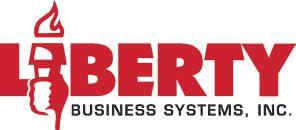
GRAND FORKS, N.D. – We’ve all been there: that place where you’re trying to figure out the all-important work/life equation. Some people spend their whole career trying to balance this equation, and some never balance it at all.
On the surface, the answer seems simple: work less and spend more time with family and friends. Problem solved. Unfortunately for most, it doesn’t work that way.
Work is hard, and we have expectations to meet. Plus we all want to advance our careers, and it’s hard to see how stepping back from professional responsibilities will help that happen.
No wonder community involvement and volunteerism are seldom at the forefront of work-life discussions. But in fact, creating community involvement and encouraging volunteerism can make people into better employees and better co-workers – and in doing so, even create better workplaces. How so?
Recent data can show us.
• According to Deloitte’s 2017 Volunteerism Survey, 89 percent of the American workforce believe that companies that sponsor and encourage volunteer activities offer better overall working environments than companies that do not.
• Seventy percent of respondents said that volunteer activities are more likely to boost employee morale than are company-sponsored happy hours, and 77 percent said “volunteering is essential to employee well-being.”
So, how can your company take advantage of this perception?
Maybe you already are. Or do you just think you are?
Because in that same survey, only a third of respondents believe their company provides access to volunteer programs, while two-thirds say they just don’t have any time during the day to dedicate to community service.
Clearly, everyone’s trying to figure out
work-life balance, but only a comparative few are succeeding.
That should change. Because the fact is, employers can benefit in many ways from their employees’ community service, besides simply feeling good as a company about giving back.
One real benefit involves leadership skills. Studies show that participating in community service can play a big role in developing vital leadership skills.
Furthermore, getting out of the workplace and engaging with one’s neighbors and fellow citizens teaches skills such as conflict resolution, effective communication, problem-solving and striving for results rather than credit.
And learning how to talk with people of different backgrounds and interests is a skill that can’t be enhanced enough.
Here’s another benefit: recruitment and retention. In Deloitte’s survey, almost 80 percent of respondents said that a company’s
commitment to the community would be a factor in their choosing between two jobs.
Additionally, employees who took part in company-sponsored community engagement felt more loyal to their company than those who didn’t, and by almost a 2-to-1 margin.
Third, customers are watching. At civic and charitable events, people notice that certain companies always have a strong contingent of their employees participating. It’s obvious, and it’s an indicator of how potential employees as well as the public view your company and its culture.
Ask people which local companies come to mind when they think of “community.” You’ll notice that a select few make everyone’s list.
So, what can Prairie Business readers do about it? In a perfect world, every company would carve out a certain amount of time for employees to participate in community service each month. But this isn’t a perfect world.
More realistically, companies can start just by talking about the subject. For example, at company meetings, a leader could ask his or her team members what they’ve done in the community recently, and what have been the results. Another question: How could other co-workers get involved?
Employees also could be asked if there are barriers to volunteering that the company could help them overcome. For example, could the company encourage teams to line up a community activity and schedule, say, a half-day to get out of the office and give back? However readers proceed, they should just know that having an office full of active and engaged citizens makes for not only a stronger community, but also a stronger workplace.
Jonathan Holth Community & Client Development Manager JLG Architects Grand Forks, N.D.
JHolth@jlgarchitects.com


Despite its low public profile, Noridian Healthcare Solutions has 1,500 employees and national reach
Paul Wilson is president and CEO of Noridian Healthcare Solutions of Fargo, N.D. And in this Q&A, he tells Prairie Business about the company and its coast-to-coast operations.
Wilson is a former CEO of Los Alamos Medical Center in Los Alamos, N.M. He also held CEO positions at Innovis Health (now known as Essentia Health), at DMS Health Technologies and at Lake Region Healthcare of Fergus Falls, Minn.

Wilson holds a master’s degree in hospital administration from the University of Minnesota-Twin Cities and a bachelor’s degree from the College of St. Scholastica in Duluth.
Q.
PAUL WILSON, NORIDIAN HEALTHCARE SOLUTIONS PRESIDENT AND CEOMY SENSE IS THAT MOST NORTH DAKOTANS KNOW ABOUT BLUE CROSS BLUE SHIELD OF NORTH DAKOTA, YOUR PARENT COMPANY, BUT FEW KNOW ABOUT NORIDIAN HEALTHCARE SOLUTIONS. IS THAT ACCURATE?
You’re right on both counts. First, we are a wholly-owned subsidiary of Blue Cross Blue Shield of North Dakota, and we have been for about 30 years. BCBSND is the state’s largest health-insurance provider, so of course it is very well known.
Second, most people have no idea what we at Noridian do. And that’s true even though we’re the fourth or fifth largest employer in Fargo.
Even many of our new employees are uncertain, because the work is foreign to most people. So whenever I speak at our employee orientations – which I do every two weeks – I talk a lot about what the company is.
A. A.

We are a federal- and state-government contractor, and what we contract to do is administer the health care side of government services, such as state Medicaid programs and the federal Center for Medicare and Medicaid Services.
That’s what we do. That is our focus: state and federal health care administrative services.
So, our work ranges from helping the state of Iowa administer its Medicaid program to providing national medical review for CMS.
Among our other duties, we also administer all of the back-office functions for about 25 million beneficiaries who are enrolled in the Medicare program, from North Dakota all the way to Guam and almost everywhere in between.
And that’s a pretty sizable obligation. That’s a lot of responsibility to deliver services to what I consider a very vulnerable population. You know, my parents are on Medicare; my dad is in a nursing home, and he is dependent on Medicare for all of his health care needs. So are most people are when they get over age 65. So you can see, that’s a pretty sizable obligation that we have, and we take it very seriously.
Q.
HOW MANY PEOPLE WORK FOR NORIDIAN, AND WHERE DO THEY WORK?
We are pretty far-reaching. North Dakota is our home base, and we have four offices here. We have our main office in Fargo, an office in Grand Forks, an office in Jamestown and a call center in Leeds, N.D.
By the way, that Leeds office is a very special place. It’s a small office; it has only about 30 people. But they’re a tremendously talented group.
We also have an office in Eagan, Minn., one in Camarillo, Calif., and finally, we have a small office in Seattle.
Q.
HOW ABOUT YOUR TELEWORKERS? WHAT KIND OF WORK ARE THEY DOING?
Those are our physical locations.
We have more than 1,500 employees, including about 800 in North Dakota. And of the 1,500 total, about 650 people are actually teleworkers – remote workers who work from home.
Q.
A.

Most of them are nurses working medical review, which means they’re helping to make sure that Medicare payments are being made only for services that meet Medicare requirements. They’re able to do that remotely from their homes.
YOU ALSO HAVE A FEW ROBOTS, I UNDERSTAND?
Yes indeed; we have robots in place. In our case, they’re nothing more than PCs, but it’s still interesting to watch them work. Their screens will open and close, and the blanks on their online forms will get filled in.
It’s RPA, or Robotic Process Automation, and it automates the routine keystrokes that our employees used to have to do.

For example, on behalf of our providers and beneficiaries, we “credential” providers – somewhere in the area of 400,000 providers
across the U.S. We look up physicans’ licensing; we make sure they’re in good standing in their profession and so on.
We have a desktop that’s called a robot that actually goes out and does all of the research for us on every person we credential. It does the routine processing so we can use our people for other things that are much more critical – things that take judgment and decision-making.
Q. AS YOUR WEBSITE NOTES, “NORIDIAN HAS BEEN A TRUSTED MEDICARE ADMINISTRATIVE CONTRACTOR SINCE CMS OPENED ITS DOORS IN 1966.” THAT’S MORE THAN 50 YEARS. WHAT’S YOUR SECRET? HOW DO YOU KEEP ON MEDICARE’S GOOD SIDE?
One answer is, we currently have the highest customer service rating of any of the contractors within CMS. We are really proud of that.
There are several reasons why we’ve achieved those high ratings. The simple fact of our being a North Dakota-based company is one. This whole “North Dakota nice” thing that you always hear about? That plays very, very well across the United States.
We handle calls and issues and problems, and that means “North Dakota nice” is one of the advantages that we have.
Second, we put a lot of time and effort into training, because we know we are only as good as the last call.
Q. WHAT DO YOU MEAN?
A. A. A.
This is really important to me, and it’s really important that every employee understands: we provide services for Medicare beneficiaries, meaning people who are 65 years and older and are dependent on us to access medical care.
That means we should do everything possible to make sure they’ve got the access they need, they can see the physicians they need
For example, our call center training is about eight weeks. From the day that a new person shows up, it’s many weeks before we let that person grab a phone and start handling calls.
The reason is that health care is complicated, as you know. The terminology is complicated, the billing is complicated, the cases can be complicated.
So when we hire call-center staff, we do so with the expectation that there will be significant training.
And that’s vital, because as I tell every one of our new hires at orientation, they have much more of an impact on customer service in this company than I do.
to see, and – interestingly enough, because we’re a government contractor – that we take as much bureaucracy out of the system as we possibly can.
At the end of the day, what allows us to continue to be in this business is our customer service – our ability to make sure that physicians get paid and beneficiaries get access to care.
NORIDIAN HAS PROVIDED HEALTH CARE ADMINISTRATION AND SUPPORT SERVICES IN ALL 50 U.S. STATES, THE COMPANY REPORTS. THIS SCREENSHOT SHOWS NORIDIAN'S CURRENTLY ACTIVE GOVERNMENT CONTRACTS INVOLVING MEDICARE, MEDICAID, DURABLE MEDICAL EQUIPMENT (DME) AND AS SUPPLEMENTAL MEDICAL REVIEW CONTRACTOR (SMRC). IMAGE: NORIDIANSOLUTIONS.COM

For most commuters near New Town, ND, taking the HWY 23B bypass will save some time, but when Senior Transportation Engineer, Tim Arens, PE, designed this route, he was more concerned with saving lives.

Developed to relieve heavy truck traffic through town, this highway provides a safer route protecting motorists and pedestrians alike.
Tim’s passion is protection; for the residents of New Town and those in every community we serve.
To learn more about the New Town Northeast Truck Reliever Route, visit our website at www.ackerman-estvold.com/projects

I came up through the provider world, so I’m a former hospital CEO. I ran a small insurance product, but I was in health care administration for more than 30 years before I came to Noridian.

And because I spent all my career on the provider side, I have the perspective from the provider as well as from the insurer; I can bring both of those to the table. So when things happen with providers, I can understand their situation. I’ve been there and can feel their frustration.
For example, we process $67 billion a year in claims. So, when something happens that involves, say, a few thousand dollars, it might not seem like a lot. But it is an enormity to a provider. If you’re at a small practice in rural Wyoming, that’s a very important sum to the physician and the practice and the staff. So we have to be sensitive to that, and we are.
In a number of locations I was at, Noridian was our third-party administrator for claims, cost reports and those kinds of things; and we had a terrific relationship with the company.
Noridian did really good work, so I’ve always had a favorable impression. And when I got the opportunity to come here, I didn’t second guess it. I knew this is really what I wanted to do.
I’ve been here now almost three years, and I’ve found that we strive every day to live up to our tag: “Solutions that put people first.”
These women are leaders in their careers and their communities, and we salute them. Congratulations to all!
TOP
25 WOMEN IN BUSINESS

University of North Dakota Grand Forks, N.D.
Amy Durbin Executive Vice President of Data Strategies & Marketing Gate City Bank Fargo, N.D.Elizabeth Bjerke, associate dean of the John D. Odegard School of Aerospace Sciences, began her career 20 years ago at the University of North Dakota — home to the world’s largest collegiate flight training organization, with nearly 2,000 students and more than 100 aircraft. Through the years, Bjerke has taken leadership roles in several UND positions. She’s also actively worked with many national organizations to find solutions to the growing pilot shortage, and she has presented her research to airline executives and military leaders at professional conferences nationwide.
These critical discussions have helped define multiple career pathway programs for students pursuing aviation degrees.
Bjerke earned three degrees at UND and is proud to be part of the steering committee that hosts UND Aerospace Community Day, an annual event that showcases to children the exciting opportunities in the aerospace industry.
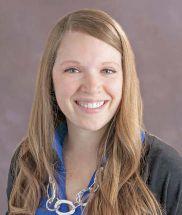
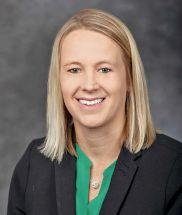 Brittany Dunn
Tax Partner
Eide Bailly Fargo, N.D.
Brittany Dunn
Tax Partner
Eide Bailly Fargo, N.D.
Brittany Dunn started her career at Eide Bailly as an intern in the tax department while attending Minnesota State University Moorhead in 2008. Since then, she has built her career on providing tax consulting and compliance services to clients in the dealership, manufacturing and service-provider industries.
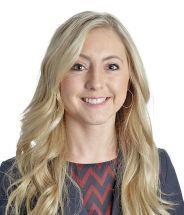
She is a frequent speaker at industry conferences on tax-related issues and an active member of the Eide Bailly Firmwide Dealership Industry Committee. She also has been involved in Eide Bailly’s recruiting team, as a career advisor to staff and as a leader in Eide Bailly’s First Focus program, a program set up to nurture a culture where women are as likely to succeed as men.
Dunn earned a bachelor’s degree in accounting and finance from MSUM and is a CPA. She serves as a member of the MSUM Paseka School of Business Advisory Council and mentor for their Business Mentorship program. She also sits on the board of directors of the North Dakota CPA Society. Her other titles include wife and mom to husband Jason and their two children.
Amy Durbin has more than 20 years of experience in banking and marketing and is making a significant impact in the financial industry.
Since joining Gate City Bank in 2013, Durbin has embodied the culture by embracing innovation and challenging her team to do the same. She was recently promoted to executive vice president of data strategies and marketing, where she leverages data analytics with marketing strategy.
Durbin’s passion for delivering a superior customer experience coupled with her industry knowledge directly supports Gate City’s mission of providing a better way of life.
Durbin serves on the board of directors for the Eastern North Dakota and Northwestern Minnesota chapter of the American Red Cross. She volunteers for local events with Gate City Bank and serves on the North Dakota State University Management & Marketing Advisory Board. She also has been heavily involved in both planning and participating in the annual Giving Hearts Day.
Jessica Ebeling
Gate City Bank
Fargo, N.D.
Jessica Ebeling has a passion for creating a Better Way of Life for Gate City Bank customers, team members and communities. Her career successes, forward-thinking and innovative approach and history of volunteerism have made her a standout in the region.
Ebeling joined Gate City Bank in 2018 and recently was promoted to executive vice president of innovation, digital solutions and payments. In that capacity, she provides leadership and strategic direction to several areas of the bank, including the Customer Service Center and Digital Banking department.
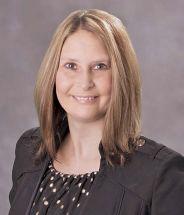
In her role, Ebeling helps facilitate the most critical innovation teams across the bank, supporting them in “raising the bar” of their aspirations. In addition, she keeps a top-of-mind awareness on market trends and shares that knowledge with team members.
Ebeling is involved in the City of Fargo Tax Exemption Committee, Fargo-Moorhead Area Foundation Grants Committee, Sanford Health Fargo Foundation Board and Harlynn’s Heart.
Tania Falk followed in her father’s footsteps by pursuing a career in accounting. She grew up in Jamestown, N.D., graduated from Jamestown College (now University of Jamestown) with a double major in accounting and business administration and later passed the CPA exam. She began her career in manufacturing, advancing to controller at Glenmac, Inc., a landscape attachment manufacturer. Continuing in manufacturing within the aerospace industry, she worked for Goodrich Corp.
The opportunity arose to work in the insurance industry, where Falk is now the chief financial officer for Farmers Union Insurance and North Dakota Farmers Union.
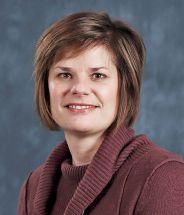
Falk is a member of American Institute of Certified Public Accountants, North Dakota CPA Society and P.E.O. (or Philanthropic Educational Organization). She serves as treasurer for the Jamestown Volleyball Boosters and the Blue Jay Junior Volleyball program and is a member of the Two Rivers Activity Center advisory committee.
Falk and her husband Jason spend many hours attending and enjoying their two children’s sports activities.
Marco Technologies
Rapid City, S.D.
Cortney Ficken grew up on her family farm near Harvey, N.D., where she learned the importance of hard work and dedication. She graduated from North Dakota State University with a bachelor’s degree in business administration and the University of Mary with an MBA.
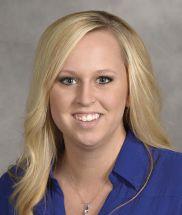
She then relocated to Rapid City, S.D., with her husband, Steven, where they live today with their year-old son. Ficken began her career at Marco in 2014 and quickly moved up the ladder. She was promoted to sales team lead for the region in 2016 and in 2017, she became the Western South Dakota sales manager for Marco’s Copier Division.
She has participated in the CEO Mentorship Group, successfully integrated employees and customers during a local acquisition and has twice landed a coveted spot on the annual sales quota trip.
Ficken is a graduate of Leadership Rapid City, where she’s working on a community vision project.
Specialist-Planning & Marketing

Altru Health System
Grand Forks, N.D.
Greta Gerloff began her career in health care while in college, filing papers in medical records at Altru Main Clinic. She has worked in various areas of health care over the past 17 years, including finance, management and planning.

In her current role as a business planning specialist at Altru Health System, she is proud of her contributions that serve the region’s patients. During her tenure, Gerloff has had the opportunity to enhance Altru’s current service lines through strategic planning, bring in new services and have several facility-expansion plans receive board approval.
She received a bachelor’s degree in finance from the University of North Dakota and an MBA from the University of Mary.
Gerloff has served on a variety of boards for Sharon Lutheran Church, as well as on Altru’s Gala Committee and the Grand Cities Children’s Choir board.
Emily Holth Owner Sustainable Solution Services Grand Forks, N.D.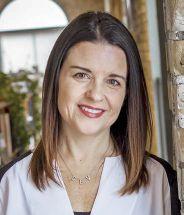
Emily Holth is the founder and owner of Sustainable Solution Services, a professional conflict-resolution firm headquartered in Grand Forks, N.D. SSS provides customized training for businesses, nonprofits and individuals covering a myriad of subjects, including navigating conflict, how to have difficult conversations, stress management and team building. SSS also provides mediation services for both the workplace and for families.
SSS provides conflict resolution services for clients throughout the upper Midwest, including the University of North Dakota.
After receiving her degree in psychology from UND, Holth’s career began in the financial services industry, where she found her love for training and coaching. Before founding Sustainable Solution Services, she worked at her alma mater at its Conflict Resolution Center.
She is also passionate about the work of Grand Forks’ Community Violence Intervention Center (CVIC), where she facilitated in the offender treatment program, New Choices, and served on the steering committee for the new shelter.
A native of Grand Forks, Holth lives there now with her husband, Jonathan, and their three daughters.
Melanie Jensen has worked at the Energy & Environmental Research Center for more than 30 years. She has pioneered new technologies to convert North Dakota lignite to liquid fuels and developed techniques to clean up gaseous and liquid emissions. Recently, Jensen has focused on reducing CO2 emissions from industrial sources through capture, compression and pipeline transport of the CO2 to geologic sites, where it can be used for enhanced oil recovery and/or safely stored.
Jensen enjoys the variety and challenges inherent in her job and loves working with the brilliant scientists and engineers on the EERC team. She proudly mentors those who are considering careers in STEM fields and gives back to the community by volunteering with her certified therapy dog, Rose.
Melanie has bachelor’s degrees in both chemical engineering and anthropology from UND. She is married and has two children and two grandchildren.
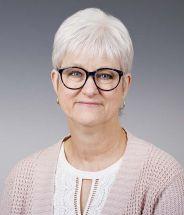

Erin Johnson has distinguished herself as a finance and accounting specialist, community leader, coworker and parent. She continues to immerse herself in opportunities for personal and professional growth as well as the continued growth of Widseth Smith Nolting.
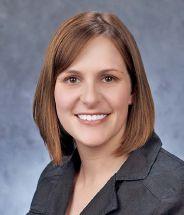
Given her many contributions to the firm and her community, Widseth Smith Nolting named Johnson a shareholder in 2018.
In a firm whose highest percentage of employees are engineers, Johnson is one of just a handful of corporate business professionals who have been elevated to shareholder.



Since joining Widseth Smith Nolting in 2012, Johnson has helped steer the firm into initiatives that have preserved the company’s resources, steadied it through challenges and nurtured its continuous growth. She approaches her work with a calm presence and a sense of joy that is infectious.
By inviting her to become a vice president, Widseth Smith Nolting’s management team has recognized Johnson as one of the firm’s top professionals and next generation of leaders.

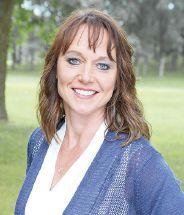
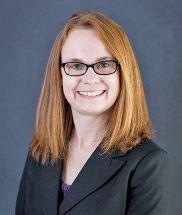
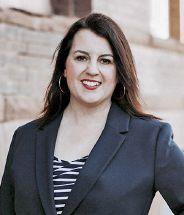 Amy Kleinschmit
Amy Kleinschmit

Amy Kleinschmit joined the Credit Union Association of the Dakotas in 2009. In her role as chief compliance officer for the trade association, she provides regulatory and compliance support for credit unions throughout North and South Dakota. Among her duties are fielding questions on the many rules and regulations that impact credit unions, contributing weekly compliance articles in the CUAD Memo newsletter and providing training and educational sessions on various credit union compliance-related topics.
Additionally, she advocates on behalf of credit unions, primarily at the federal level, through comment letters she prepares in response to proposed regulatory changes issued by the various federal agencies with rulemaking authority that affect credit unions in the Dakotas.
Kleinschmit earned her law degree from the University of South Dakota School of Law in Vermillion, S.D. She lives with her family in Sioux Falls, S.D.
Karna Loyland began her career at Alerus in 1999, working on wealth management initiatives. In 2001, she transitioned to leading the lending and mortgage areas for Alerus.
Her technical knowledge, along with her enthusiasm, drive and natural curiosity, led her to the role of director of deposits in 2008. In this leadership post, Loyland plays an integral role in growing and leading the company in addition to managing the company’s deposit offerings and spearheading innovative technology solutions for consumer and commercial banking.

Loyland earned her bachelor’s degree in economics and Russian studies from St. Olaf College in Northfield, Minn. She earned her MBA from the University of Minnesota Carlson School in Finance and Strategic Management. She also studied international business at the University of Copenhagen, Denmark.
She serves on the board of directors for the Altru Family YMCA in Grand Forks. She and her husband, Mike, and their two sons live in Thompson, N.D.
Along with designing the financial structure at Arvig to handle the company’s tremendous growth, Staci Malikowski, the chief financial officer since 2009, is instrumental in driving a positive workplace culture that attracts top talent across the region.
Known for inspiring innovation and collaborative work, Malikowski also is an approachable executive whose leadership extends beyond her financial oversight.
The drive and tenacity she brings to her career extend to her
Amber Larson has a number of nametags and has difficulty introducing herself because she is often representing a variety of roles.
With 15 years of communications experience, she is a senior marketing manager out of Bartlett & West’s Bismarck office, but she interacts with staff and clients on engineering projects throughout the Midwest.
Larson also is co-owner of Larson’s Tattooing – based in a historic building on Main Street in Mandan, N.D. – with her husband, Jon.
In addition, she was elected in 2018 and currently serves as a Mandan City Commissioner. Larson is passionate about giving back to her community and being a catalyst for improvement. She serves on the Mandan Architectural Review Commission, is active with the Mandan Progress Organization and is involved with various civic and nonprofit organizations in Bismarck-Mandan.
Larson holds a bachelor’s degree in mass communications from Minnesota State University Moorhead and a master’s in strategic leadership from University of Mary.
passion for community causes. She has served on boards for the Boys and Girls Club of Detroit Lakes and Perham, Empowering Kids Perham, the Perham Area Community Center, Perham Health and Bethlehem Lutheran Church of Frazee, Minn.
Malikowski holds a bachelor’s degree in accounting from Metropolitan State University in St. Paul, Minn., and an MBA from Regis University in Denver. She is also a CPA through the Minnesota Society of CPAs.
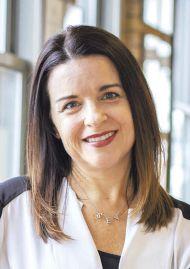

Monica McConkey has 25 years of experience in the behavioral health field as a counselor, program supervisor and administrator.
The first 12 years of her career were spent providing direct therapy services to children and adolescents. McConkey then went on to work as a supervisor, assistant director and director of Stellher Human Services based in Bemidji, Minn.
In 2014, Monica joined the team at Prairie St. John’s in Fargo as their director of business development. The primary focus
throughout her career has been to increase access to – and remove the stigma often attached to – mental health services through program development and education.
Most recently, McConkey founded Eyes on the Horizon Consulting, through which she does part-time speaking and training to farmers and agricultural business professionals throughout the country on the topic of emotional stress.

She lives in Detroit Lakes, Minn., with her significant other, Bill, and three teenage children.
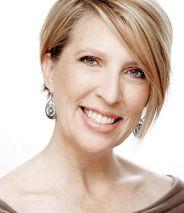
Dr. Maria “Duffy” Meyer grew up on a ranch in Killdeer, N.D. She graduated from Dickinson State University and University of Colorado. Her career in dentistry began in 2007 in Bismarck, N.D.

In 2011, Meyer had the chance to open High Plains Dental in Dickinson and jumped at the chance to serve southwest North Dakota. She believes that everyone should have access to dental care, which is why she’s active on the North Dakota Medicaid advisory board, is the state representative for North Dakota Donated Dental Services and volunteered at the first Mission of Mercy held in North Dakota.
In addition, Meyer volunteers at four elementary schools, providing dental care for students in need.
Meyer serves on the Sacred Heart Monastery board and previously served on the Trinity Catholic Schools board and Trinity Mardi Gras committee. She credits her success to her wonderful family and staff. She feels very lucky to have found such a great community to live and work in.
Meyer and her husband, Mathew, and their children live in Dickinson.

National Information Solutions Cooperative Mandan, N.D.
Mary Klecker Miller is manager of communications and events at National Information Solutions Cooperative, a national software company.
Miller oversees marketing, brand development, communications, multimedia and creative services, along with national conferences and tradeshows.
Before coming to NISC, Miller served as vice president of communications and creative services for Basin Electric in Bismarck, N.D.
Miller is a graduate of Minnesota State University Moorhead and Bismarck-Mandan Chamber of Commerce’s Leadership Program. She serves on the boards of the Bismarck Public Schools Foundation and CommunityWorks North Dakota.

She’s active with Brave the Shave, an areawide nonprofit supporting families in the fight against children’s cancer. She’s a past board president for the International Association of Business Communicators-Great Plains Chapter and past board member of Abused Adult Resource Center, the Bismarck State College Alumni Foundation and Missouri Valley Montessori.
She and husband Brady are parents to three children.
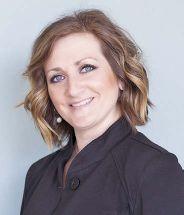
Ann-Marie Morrow is the assistant vice president and branch manager at TCF Home Loans in Grand Forks. In this role, she brings 20 years of experience developing business strategy and leading teams to originate residential loans.
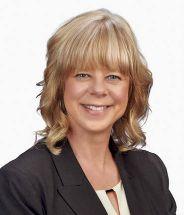
Prior to joining TCF Home Loans, Morrow worked as the assistant vice president and branch manager at Rubicon Mortgage Advisors. She also held roles as vice president residential mortgage lending at Bank Forward and home mortgage consultant at Wells Fargo.
A graduate of Concordia College in Moorhead, Minn., Morrow holds a bachelor’s degree in political science and organizational communication. She also holds an MBA from the University of Phoenix.
Morrow was appointed and served two terms to the North Dakota Association of Realtors’ Real Estate Trust Account Committee, was chair of the Finance Committee for the Grand Forks Area Association of Realtors from 2010-2018, twice was named the Grand Forks Area Association of Realtors Affiliate of the Year and served on the Fundraising Committee at Sunshine Memorial Foundation.
Fargo, N.D.
With more than 18 years of information technology experience, Mandy Nystrom has proven to be a leader of high-performing technology teams in the Fargo-Moorhead area. She’s passionate about IT process improvement and holds several IT Infrastructure Library certifications.
She has helped organizations implement ITIL best practices to improve IT efficiency and effectiveness of service delivery while reducing cost.
Nystrom has been an active member of the local IT Service Management Foundation for the past three years and is this year’s chapter president. She helps connect other IT professionals by organizing nationally known IT Service Management speakers to participate in events in the Fargo-Moorhead area.
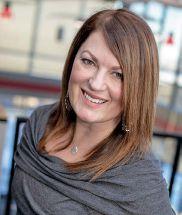
She enjoys giving back to her community by teaching second-grade faith formation and is a parent leader in her children’s 4-H club.
Nystrom is a support team lead at Network Center in Fargo. She lives in West Fargo with her husband, Damion, and their two children.
Christie Obenauer was born and raised in Hazen, N.D. After graduating from St. Olaf College in Northfield, Minn., she began her banking career at what was then Norwest Bank in Fargo. She worked for a regional bank in the Boise, Idaho market before moving back to Hazen in 2002, where she continued her banking career at her family’s community bank, Union State Bank.
Obenauer is the fourth generation in her family to lead their 111-year-old institution. She is active in many local, state and regional boards involving banking and business, including the North Dakota Bankers Association, the Bank of North Dakota, Graduate School of Banking-Colorado, Sakakawea Medical Center and the Energy Capital Child Care Cooperative. She is passionate about community banking, her community and her state.
Obenauer is the wife to Jerry and mom to three children. She loves to spend time with family and friends, volunteer, travel and read.

Erin O’Leary began her career at the Energy & Environmental Research Center as a research technician in 1997. Since that time, she has managed both technical and financial teams, leading to her current position as chief financial officer/chief operating officer.

Her experience and creative approach to tackling challenges have been instrumental in transitioning the EERC to a new culture and business environment.
O’Leary is proud to work with a great team of people doing research and development that have positive impacts on North Dakota and the world. She’s also very active in the broader University of North Dakota community.
O’Leary holds master’s degrees in business administration and management from the University of Mary and a bachelor’s degree in business administration from UND. She is an active member of Sacred Heart Catholic Church.
She and her husband, Gary Theisen, have six children, 20 grandchildren and one great-grandchild.
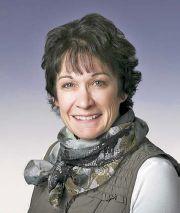
Agriculture has always been a big part of who Julie Peterson is. She was raised on a family farm in northeast Iowa. After graduating from college and moving to North Dakota, Peterson started her career at Great Plains Software in its early years. She and her husband, Carl, went on to found Peterson Farms Seed in the mid-1990s. Since then, the business has grown to become the largest independent corn and soybean seed company in the tri-state region.
At Peterson Farms Seed, Peterson is vice president, overseeing
marketing and human resources for the growing company of 50-plus employees. Peterson’s “people over profits” mindset has helped establish a customer-service-centric business and a family-friendly culture for the company’s employees.
Peterson is an active advocate for agriculture education, including hosting the annual Banquet in a Field event held on the Peterson family farm every summer.
When not in the office, Peterson enjoys volunteering, snowskiing and snuggling her growing brood of grandchildren.
 Erin Prochnow CEO
YWCA Cass Clay Fargo, N.D.
Erin Prochnow CEO
YWCA Cass Clay Fargo, N.D.
Erin Prochnow has served as chief executive officer of the YWCA Cass Clay since 2008. The organization runs the largest emergency shelter serving women in children in North Dakota and northwest Minnesota.
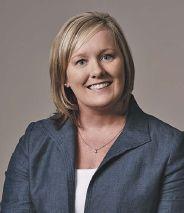
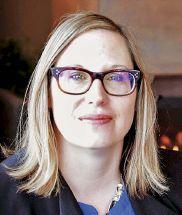
Under her leadership, the YWCA has expanded programs to encompass a full array of housing services, including homelessness prevention, emergency shelter and supportive housing.
Prochnow represented eight Midwest states on the YWCA USA National Board from 2010-12 and served on the United Way of Cass-Clay’s board from 2014-17.
Before joining the YWCA Cass Clay, Prochnow was a field representative for former North Dakota U.S. Sen. Byron Dorgan. Earlier, she coordinated leadership programs for the Fargo-Moorhead Chamber of Commerce.
A native of Wahpeton, N.D., Prochnow earned her bachelor’s degree in political science with a minor in social welfare from Minnesota State University Moorhead. She lives in West Fargo, N.D., with her husband, Darin Bjornson, and their two children.

Courtney Presthus, an owner of Ebeltoft . Sickler . Lawyers in Dickinson, is a successful litigator who represents national and international oil companies in multimillion-dollar disputes and defends medical professionals in malpractice litigation. Her work as a civil litigator has garnered national recognition. She recently served as the North Dakota state representative for the Defense Research Institute, the largest international organization of civil litigation attorneys with more than 20,000 members.
In addition to her career-centered organizations, Presthus is involved with many community charitable projects and boards. She’s currently on the board of directors for the Domestic Violence and Rape Crisis Center and the Stark County Fair Board.
Presthus spends free moments either relaxing with her husband, Rick, and their six-month-old daughter, or competing in rodeos and barrel racings with her beloved horses.
F

or almost two decades, Jennifer Turnbow has found solutions that balance natural and built environments. Over the course of her career, she has gone from a National Environmental Policy Act and environmental specialist to growing and managing KLJ’s cultural resources, environmental, right-of-way, and survey departments across various geographies.
In 2014, Turnbow was chosen as the senior project manager for the North Dakota Department of Transportation’s largest project in history,
the U.S. Highway 85 I-94 Interchange to the Watford City Bypass. The project won regional and state awards.
Turnbow’s passion for helping her community goes beyond KLJ. When her son was diagnosed with severe food allergies, Turnbow became an advocate and resource for families in similar situations.
Turnbow has a bachelor’s degree in environmental science from the University of Idaho and is a Dale Carnegie graduate. She participates in Toastmasters, Optimist Club and the Women’s Leadership Program of the Center for Technology and Business.




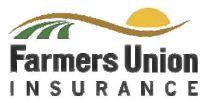







Is the glass half-empty or half-full?
Half-full, came the answer on Feb. 8 at the airport in Williston, N.D.
Even though any actual liquid would have frozen, turning its container into a glass half-full of ice.
The temperature at Sloulin Field International Airport on that day set a record at minus 43 degrees, said Anthony Dudas, airport director. Nevertheless, passengers still boarded planes the Sloulin Field way: They walked out onto the tarmac, then loaded onto the aircraft via ramps and stairs.
“Do people still have to walk outside to get onto their aircraft when it’s 43 below? Yes they do,” Dudas said.
But here’s the thing: That frosty tradition is about to enter the history books. Because Williston is building a brand-new, $280 million airport, one that’s set to open in October.
And when that happens, passengers will board planes via passenger bridges at last, Dudas said. Not only that, but among many
other improvements, “we’ll have actual baggage-claim devices.
“Right now, we have a baggage slide, similar to an Oversized Bag Area at a modern airport,” he said. “But at the new airport, we’ll have carousels for baggage claim that people will be able to use.”
For business travelers, the evolution underway at Williston’s airport mirrors the changes that have happened throughout western North Dakota. Throughout the region, a construction boom has put in place new hotels, conference spaces and other facilities, almost all of which now are open and and are
ready to host meetings, conventions and other corporate events.
“People don’t really appreciate that throughout western North Dakota, we now have five-star and four-star facilities that have just been built, so they’re all very new,” said Doug Bolken, McKenzie County (N.D.) Tourism director.
“For example, within Watford City, we have 900 hotel rooms available. We have meeting space ranging from boardrooms all the way up to convention halls.”
At the top of Watford City’s corporate-travel pyramid sits the Rough Rider Center, a $100 million facility in that opened in 2016. It has conference space for up to 500 people, full kitchen services, an aquatic center, two hockey rinks and a sports arena.
All of which mean Watford City now is hosting state government meetings, oil industry conventions and other corporate events that never could have happened before the oil boom.
“Add to that the restaurants and other improvements in our downtown, and it has really been a tremendous change,” Bolken said.
The same is true in Dickinson, N.D., said Julie Obrigewitsch, sales coordinator for the Dickinson Convention and Visitors Bureau.

“Several years ago, there was the perception that Dickinson did not have the appropriate lodging accommodations,” Obrigewitsch said.
“Groups were hesitant to come here because they felt we didn’t have any rooms and that if we did, they wouldn’t be high quality.”
These days, “that is not the case,” she said.
“Since 2011, we have had 10 hotels that have opened in Dickinson, and we have added 878 rooms.
“So, our number is 1,732 lodging rooms that we have right now.”
Along with that increase, “we’ve added a new conference center,” she said.
“The Astoria Hotel and Event Center was totally new construction. It was originally built in 2011 with 97 rooms, then they added on 73 more rooms in 2013. And they have more than 15,000 square feet of flexible meeting space, and just last year, they opened a restaurant.”
The facility now routinely hosts meetings, oil-industry training sessions and other events, she said.
Meanwhile, the existing conference center – the Ramada Grand Dakota Hotel – hasn’t rested on its laurels. “They added on 43 suites, so a whole new wing to the hotel,” Obrigewitsch said.
“Now they have 192 lodging rooms with more than 14,000 square feet of meeting space.”
MORE ON: Page 35






That’s just the start of Dickinson’s strengthening appeal. The Dickinson Museum Center – home of the Badlands Dinosaur Museum and other attractions –now is open year-round. “That’s something that has recently changed, and it’s great,” Obrigewitsch said.
There’s a new rodeo stadium at the Stark County Fairgrounds outside of town. The Fluffy Fields Vineyard and Winery, which opened in 2016, offers wine tastings and guided tours. New restaurants and bars make downtown Dickinson a lot more inviting for visitors.
“We’ve worked really hard to change the old perceptions to be more positive, because it is a lot more positive now,” she said.
Minot, N.D., too, is a whole different city for travellers than it used to be. In 2010, the city had 17 hotels. “Now, there are 27, with a total of 2,600 rooms,” said Phyllis Burckhard, executive director of the Minot Convention & Visitors Bureau.
Partly as a result, “we’ll be hosting the state Democratic-NPL Party Convention here next year. We’ve hosted the North
FROM: Page 33
Dakota Firefighters Association each year for the past several years.”
There are many more, “and they’re happening all year round,” Burckhard said. Long-time attractions such as the Scandinavian Heritage Park and Dakota Territory Air Musuem remain popular with business travelers. But in Minot as elsewhere, new businesses add to the draw.
“We have a new speakeasy called Saul’s; you literally have to find it,” said Rianne Kuhn, the Minot CVB’s marketing and communications director.
“It’s down a staircase where there is nothing marked. You have to hit the buzzer and have the password to get in.”
But it’s worth the effort, because behind the bar is one of the two “Certified Cicerones” or beer-masters in the state.
4 Bears Casino and Lodge in New Town, N.D., is another corporate-meeting facility whose growth is worth noting. When it opened in 1993, 4 Bears consisted of a motor lodge, a gaming floor and a little cafe, said Dave Bren, marketing director. Today, visitors will find 220 hotel rooms, a Vegas-style casino with more than 750
slot machines, an RV park, a marina on Lake Sakakawea and an event center completed in 2016.
“We’re currently hosting a North Dakota high school girls’ basketball regional tournament,” Bren said.
“We’ve done boxing, comedy, car shows, regional entertainment, national entertainment. We’ve built our own resort destination, and while it’s definitely off the regular path, we’re within an hour or two of Minot, Dickinson, Bismarck and Williston.”
4 Bears’ expansion is part and parcel of western North Dakota’s strengthened ability to cater to corporate travelers, among others, Bren said.
“Thanks to the oil boom, there are definitely modern facilities throughout this part of the state where there didn’t used to be many,” he said.
“It’s impressive, and it’s great to see that the facilities are getting a lot of use.”
Tom Dennis Editor, Prairie Business tdennis@prairiebusinessmagazine.com 701-780-1276
Shhhhh–please don’t tell her we said so. When our CEO, Christie Obenauer, was named one of the Top 25 Women in Business she forbid any public accolades, but we just couldn’t help ourselves. (And we don’t want our marketing firm to get fired over this.)
(WE’RE SECRETLY REALLY PROUD OF YOU.) BetterState.com
FARGO, N.D. – First International Bank & Trust has hired Charlie Cooper as East market private banking manager. Cooper, who is based in Fargo but will work with clients all over the state, has nearly two decades of experience in financial services.
A relatively new program at the bank, private banking offers one-on-one service and is designed to suit the needs of affluent and emerging affluent clients.


FARGO, N.D. – DSG recently named Malcolm Macdonald as general manager of the company’s Waterworks segment. Macdonald previously served as the Waterworks segment manager, and those duties will be folded into his new position.
Macdonald started at DSG as an account manager in 2003 and was named branch manager for the Sioux Falls Waterworks facility in 2007. In 2011, he was promoted to Waterworks segment manager. DSG distributes products and services for the waterworks, plumbing, electrical, HVAC/R, utility, communications and automation trades. It is an employee-owned company with nearly 700 employee owners.
FARGO, N.D. – Two new hires have joined Houston Engineering Inc.

· Moriya Rufer has joined the company as a scientist III.
Rufer brings 15 years of experience in water resources – including working on lakes protection in northern Minnesota – to the HEI water quality team, HEI reports. Based out of Detroit Lakes, Minn., Rufer will be involved in One Watershed, One Plan, Total Maximum Daily Load projects and WRAPS or Watershed Restoration and Protection Strategies as well as other water quality studies.
Moriya earned her master’s degree at the University of Minnesota.
· Spenser Wipperfurth has joined HEI’s Maple Grove, Minn., office as an engineer I. Wipperfurth will work within the water resources sector, helping with hydrology, hydraulics and water quality models. She also will review permit applications and provide support on project design and implementation.


Originally from Edina, Minn., Wipperfurth recently returned home from Peru, where she worked with the Peace Corps for the past two years. She earned her bachelor’s degree in engineering and Spanish literature from the University of Wisconsin-Madison.
MORE ON: Page 38
High Plains Dental would like to congratulate Dr. Maria “Duffy” Meyer on being recognized as one of Prairie Business Magazine’s Top 25 Women in Business!



Thank you for your leadership, dedication, and tremendous impact you have made on the communities you serve! Your commitment and passion are inspiring.
Congratulations, Dr. Duffy!
669 12th St West Dickinson, ND 58601 (701) 483-4746
www.highplainsdentalpc.com

FROM: Page 36

FARGO, N.D. – North Dakota State University’s College of Business has hired Scott David Meyer as executive director of entrepreneurship initiatives.
Meyer’s role is to foster connections on campus and in the community that help develop NDSU’s entrepreneurship program, according to NDSU. He will be responsible for teaching, creating events, connecting with resources on campus and in the community and helping NDSU build a more dynamic entrepreneurial ecosystem.
Meyer started his career as a lecturer and researcher at The Arctic University of Norway. Then he became an entrepreneur, starting several companies, including 9 Clouds, a digital marketing company for car dealers based in Sioux Falls, S.D. Meyer is a former Brookings (S.D.) City Council member who founded TEDxBrookings, Creativity Week and 1 Million Cups in Brookings. He earned his bachelor’s degree in political science from Luther College in Decorah, Iowa, and his master’s degree in peace and conflict transformation from The Arctic University of Norway.

BISMARCK, N.D. – Michelle Larson of Bismarck has been elected to Starion Bank’s board of directors. Larson has served on the board for Starion’s parent company, Starion Bancorporation, since 2012. She was a pharmaceutical representative for many years before becoming a community activist. Larson is involved in raising awareness of homelessness, food insecurity and other issues. She studied at Moorhead State University and North Dakota State University and earned a bachelor’s degree in communications.

FARGO, N.D. – Nurse Practitioner Katie Gurskis has joined the Family Medicine Department at the Essentia HealthMoorhead Clinic in Moorhead, Minn. Gurskis has worked at Essentia Health as a registered nurse in the emergency room for the past 10 years. She earned a master’s degree in nursing from Clarkson College in Omaha, Neb., and is certified as a family nurse practitioner by the American Academy of Nurse Practitioners.

FARGO, N.D. – Kristine Melby has joined Cornerstone Bank as senior vice president of business development. Melby works with businesses from across the Dakotas to help them reach their financial goals. She has worked in banking and business development for more than 20 years.

Originally from Bowbells, N.D., Melby earned her bachelor’s degree from Minnesota State University in finance and marketing.
One of North Dakota’s 10 largest financial institutions, Cornerstone Bank has 13 locations in North and South Dakota.
















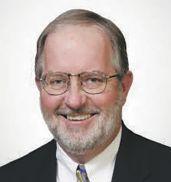






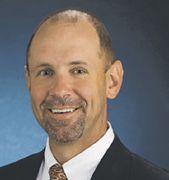


 By Tom Dennis. All images: Border States Electric
By Tom Dennis. All images: Border States Electric
FARGO, N.D. – The copper and aged bronze colors on the exterior of Border States Electric’s new headquarters here are no accident. They’re meant to reflect the electrical components that Border States distributes – products that have powered the company’s growth from two electrical-supply salesmen in 1952 to more than 2,200 employee-owners today.
The $45 million, 120,000-square-foot Branch Support Center is located near North Dakota’s busiest corner: the intersection of interstates 29 and 94. When it opened in February, some 360 workers who’d been
scattered at three facilities across Fargo moved in, said Tom Nelson, corporate communications director.
“We’re a growing company, now with more than $2 billion in annual sales and over 100 branches in 22 states,” Nelson said.
“Parking constraints and the costs of leasing the building we were in and of renovating a 25-year-old warehouse into office space were all factors in deciding to build.”
Plus, “we’re in a competitive hiring market, and the Branch Support Center will certainly help us recruit and retain the best talent,” he said.
MORE ON: Page 43




FROM: Page 40
Hammel, Green & Abrahamson Inc. designed the building, with Mortenson serving as lead contractor. Key features include:
· Next-generation mesh wireless technology, allowing for seamless connectivity anywhere in the facility

· More than 600 acoustic dampening (white noise) speakers throughout the building to lessen distractions and allow for collaborative and mobile workforce
· Conference rooms with “Switched Privacy Glass” or “Smart Glass”
· Integrated HVAC, lighting and shade controls to reduce energy consumption, capture natural light (light harvesting) and provide for consistent temperature control
· Integrated display technologies throughout the building that provide up-to-date information
· Skype for Business meeting spaces with audio and video capabilities via an integrated one-touch meeting management system.
– Tom Dennis Editor, Prairie Business tdennis@prairiebusinessmagazine.comIn her role as support team lead at Network Center, Inc., Mandy’s broad IT experience and passion for applying the latest technologies to customer challenges have brought success to our company and our clients.

We’re proud of you and your well-deserved recognition.
netcenter.net
800.723.5353


Over the past few years, the Human Resources department at Basin Electric Power Cooperative has created procedures and software to move from hard-copy personnel, benefits and payroll files toward the electronic storage of employee files.


By categorizing each employee file, we control who can and cannot see the documents, improve record retention, create instant availability and reduce the need for storage space.
This allows for better organization and easier accessibility of important documents.
This initiative fits with our goals of employee focus, continuous improvement and a forward look. Cooperatives are about people, recognizing that growth comes when we find solutions as a team.

At Northern State University, we implemented an online workflow system that allows electronic signatures on myriad HR documents, including paperwork for new hires, student labor authorizations and travel authorizations. This system has reduced the time needed to complete those documents by days.
Authorized signatures can even be obtained via a smartphone. It also makes it easier to locate a document while it’s in the workflow process – using a click of the mouse rather than walking from office to office trying to find a printed document.
Susan Bostian Associate Vice President of Finance and Administration / Director of Human Resources

Northern State University
Aberdeen, S.D.
Lindsay Mack Vice President/Human Resources Director Cornerstone Bank Fargo, N.D.

The greatest technology change we have made recently is implementing a complete human resources information system (HRIS).
Our HRIS has improved our efficiency and productivity by streamlining our payroll processing tasks and benefits administration. Over time, we have added additional modules such as the performance management and recruitment modules. The recruitment module has simplified the process of collecting and tracking applications.
Another module we have added is the document storage system. We now scan and upload all employee documents to our HRIS system, eliminating paper personnel files.
Our HRIS system also helps us remain compliant with laws such as the Affordable Care Act.



“The Creighton University Rural Mainstreet Index for January fell, but remained above growth neutral, according to the monthly survey of bank CEOs in rural areas of a 10-state region dependent on agriculture and/or energy.
“The overall index sank to 51.5 from December’s 54.2. This was the 11th time in the past 12 months the index has remained above growth neutral. The index ranges between 0 and 100, with 50.0 representing growth neutral.
"’Our surveys over the last several months indicate the Rural Mainstreet economy is expanding outside of agriculture. However, the negative impacts of tariffs and low agriculture commodity prices continue to weaken the farm sector,’ said Ernie Goss, PhD, Jack A. MacAllister Chair in Regional Economics at Creighton University’s Heider College of Business.”
– Creighton University Economic Outlook

labor force participation
north
south dakota wisconsin united states
Source: Bureau of Labor Statistics via Haver Analytics. Updated July 2, 2018. Source of graph: Federal Reserve Bank of Minneapolis
-5.0% or less -4.9% to -2.5% -2.4% to 0%
Population gains outside of the seven-county metro are in “recreational” counties and where non-white populations are concentrated.
Data: U.S. Census Decennial Census & American Community Survey 5-year
Source of map: Center for Rural Policy and Development, RuralMN.org
entirely rural urban/town/rural mix Minnesota Town/rual mix entirely urban
Earnings per job shows an increasing gap between entirely urban counties and the rest of the state. Agricultural income can have a significant impact on entirely rural counties, which can be seen between 2008 and 2014. Data: Bureau of Economic Analysis, Regional Personal Income and Employment

 From left to right: Jessica Ebeling, EVP of Innovation, Digital Solutions & Payments • Kim Meyer, EVP, Chief Human Resources Officer • Maureen Jelinek, EVP of Operation Services • Amy Durbin, EVP of Data Strategies & Marketing • Kim Settel, EVP of Retail Banking & Lending
From left to right: Jessica Ebeling, EVP of Innovation, Digital Solutions & Payments • Kim Meyer, EVP, Chief Human Resources Officer • Maureen Jelinek, EVP of Operation Services • Amy Durbin, EVP of Data Strategies & Marketing • Kim Settel, EVP of Retail Banking & Lending
It’s not about what happened before today: the best-laid plans, the endless decisions, the hesitations, the hopes, the what-ifs and what-nows. All that matters is what happens now. All that matters is this moment when everything changes.
